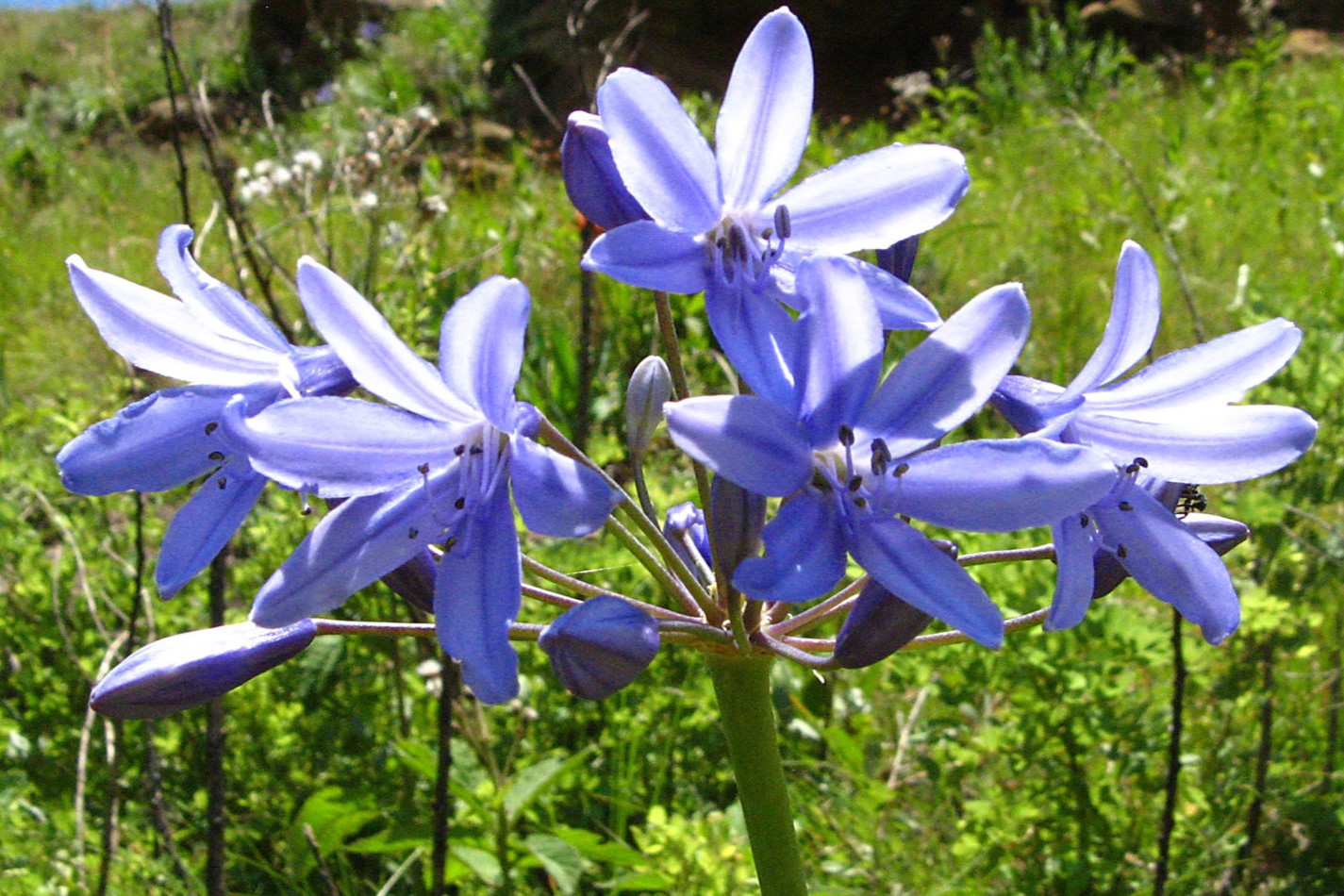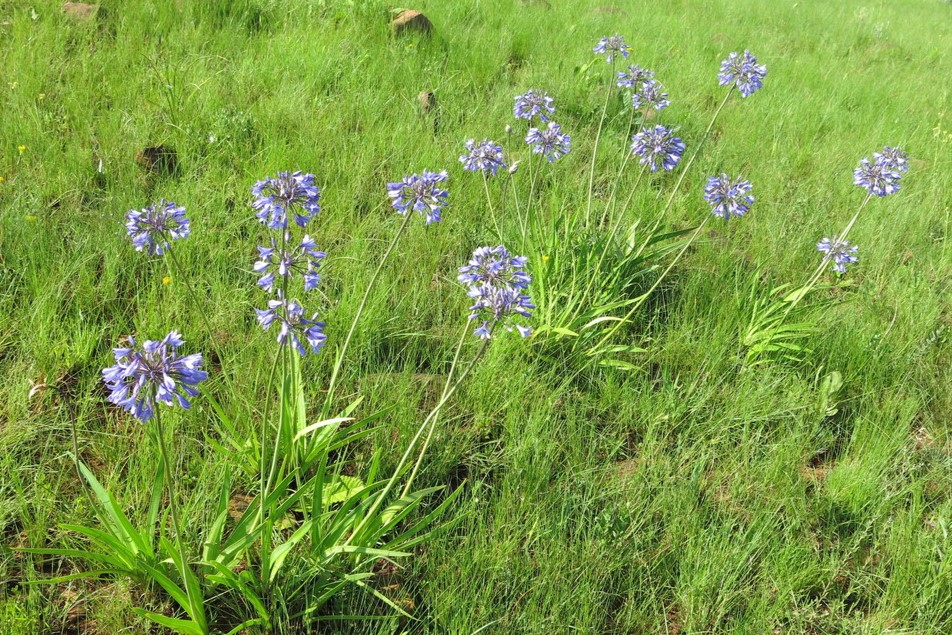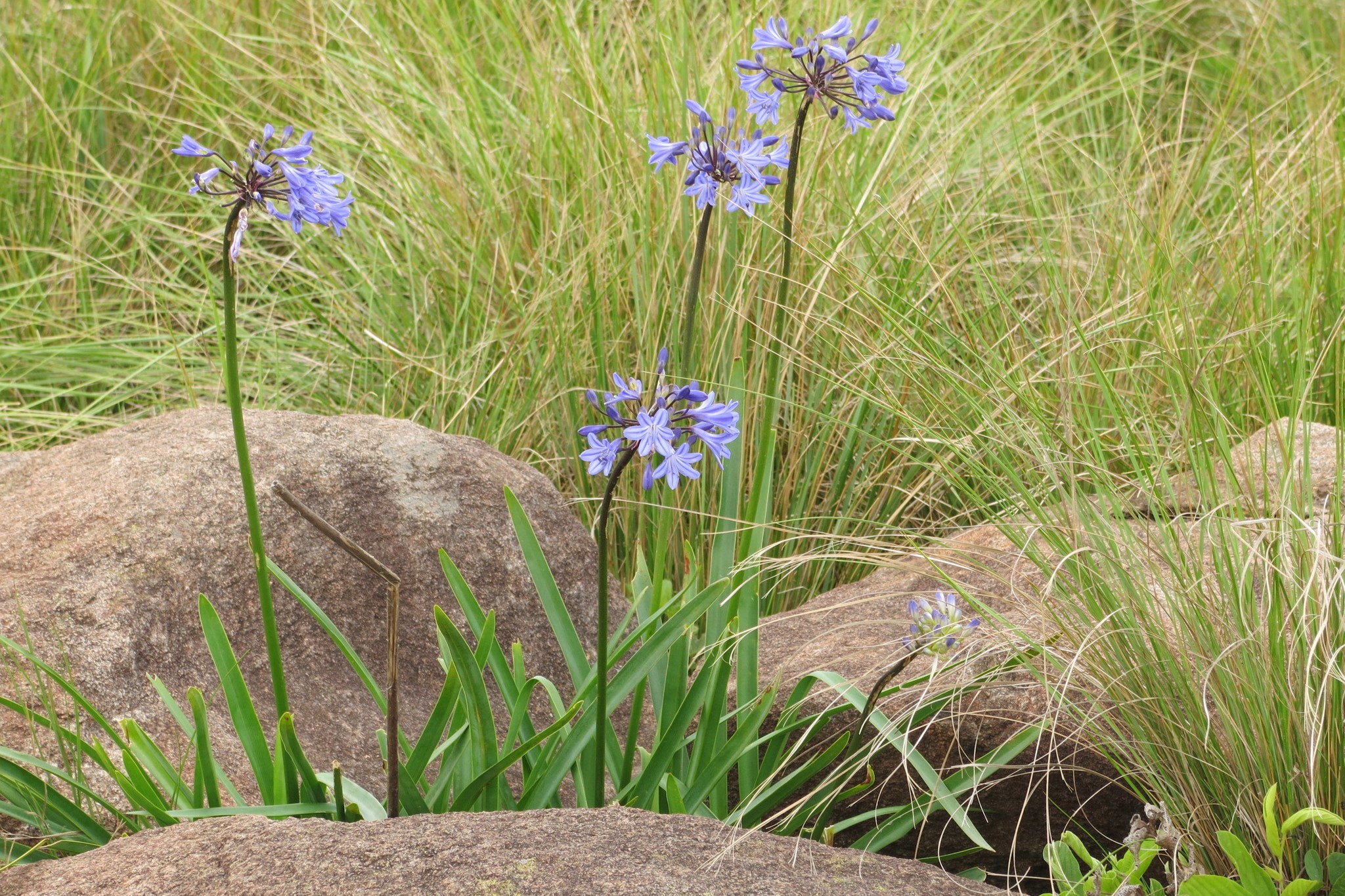Bloulelie, Agapant
Ubani
Ugebeleweni, Isicakathi

Deciduous, clump-forming perennial bulbous plant.
Strap-shaped, glossy green to grey-green leaves (6–12 per clump), up to 40–60cm. Purplish stem base.
Umbels with 10–30 pale to deep blue, bell-shaped flowers with a dark blue stripe, borne on long stalks (up to 1m) from December to March.
Fruit is a capsule with many flat, black, winged seeds.
Visually prominent in colonies among rocks and wet grassland.


Insects: Flowers provide nectar and pollen resources for a wide range of nectar and pollen feeders. The umbel structure is popular among some Lepidoptera adults for nectaring.
Soil: Dense clumps stabilize slopes and minimize erosion.
Wildlife: Flowers provide nectar/pollen for generalist pollinators. The plant structure offers some shelter to small invertebrates.
Ecosystem Services: Useful in erosion control on slopes, water cycling in grassland habitats where roots stabilize soil.
Pollination: Flowers attract generalist pollinators such as honeybees and other large bees, and some lepidoptera.
Fruit/Seed Dispersal: Capsules release wind-dispersed seeds.
By seeds: Collect seeds from dried capsules in late summer. Store dry and sow in spring (soil temp ~12°C).
Use well-drained, fine seedling mix. Lightly cover; germination in 2–8 weeks.
Success rate high if kept moist but not waterlogged.
Easily divided after flowering as clumps grow large.
Lift clump, pull or cut apart natural divisions, replant immediately.
Good success rate if roots kept moist while out of the ground.
Historical/Medicinal: Historically used for fever, wound healing, pain, headache, body rashes in infants, as a tonic, and occasionally for cancer and spirit-related illnesses in ethnomedicine. Roots and leaves used for newborn baby washes to impart strength; treatment for cradle cap in infants; protective charm against lightning and thunder.
Used as a mild purgative, for chest complaints, colds, coughs, menstrual and cardiac ailments, and as a general tonic for infants. Sometimes incorporated into remedies for heart disease, high blood pressure, and aiding childbirth (note: effect documented in related species and genus; used only under guidance due to possible mild toxicity).
Toxicity: All parts of Agapanthus campanulatus are toxic if ingested, especially the roots and leaves, which contain concentrated levels of saponins. Toxic effects in humans and animals include: gastrointestinal irritation, mouth ulceration if chewed, skin irritation or rash. Symptoms are often self-limiting and rarely fatal.
Pharmacological actions: Anti-inflammatory activity: Root extracts have demonstrated strong inhibition of the cyclooxygenase-2 (COX-2) enzyme (83.7% inhibition at 62.5μg/ml in laboratory assays), supporting traditional use for pain and gastrointestinal cramps. This effect is attributed to various secondary metabolites, including phenolics, flavonoids, alkaloids, and saponins.
Cultural Significance: Used as a protective or lucky charm, in initiation ceremonies, to ward off evil and weather, as an indicator of seasonal cycles.
Uniqueness/Ecological Value: Hardy, adapts to cold and poor soil, forms attractive colonies. Plays a minor but persistent supporting role in biodiversity and ecosystem function of moist/rocky grasslands
